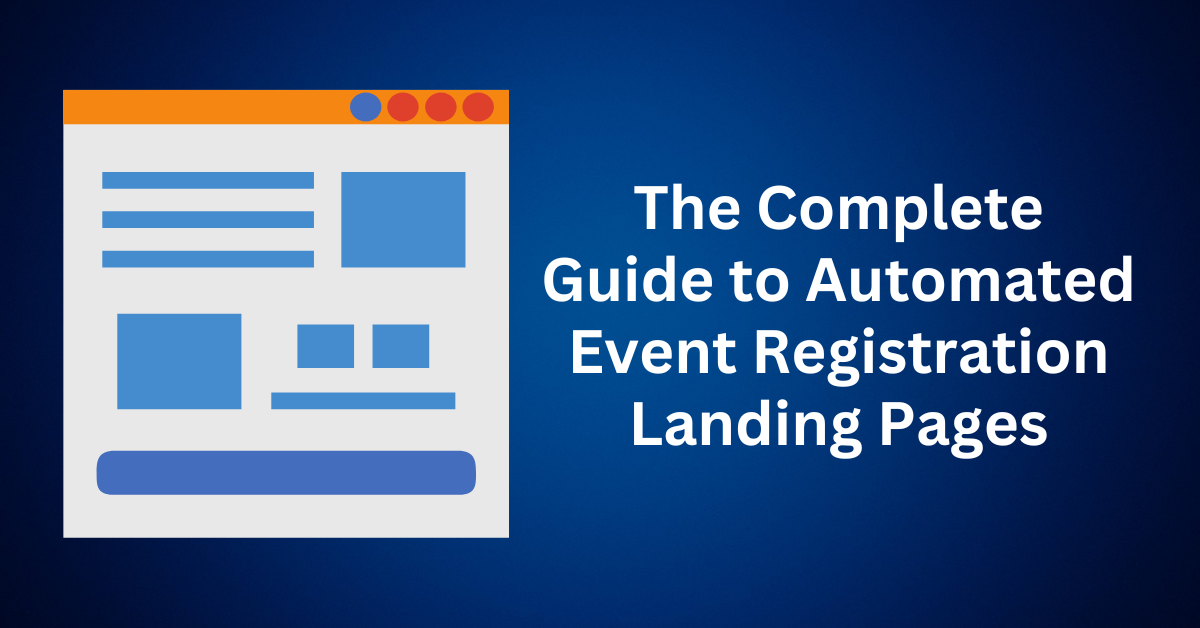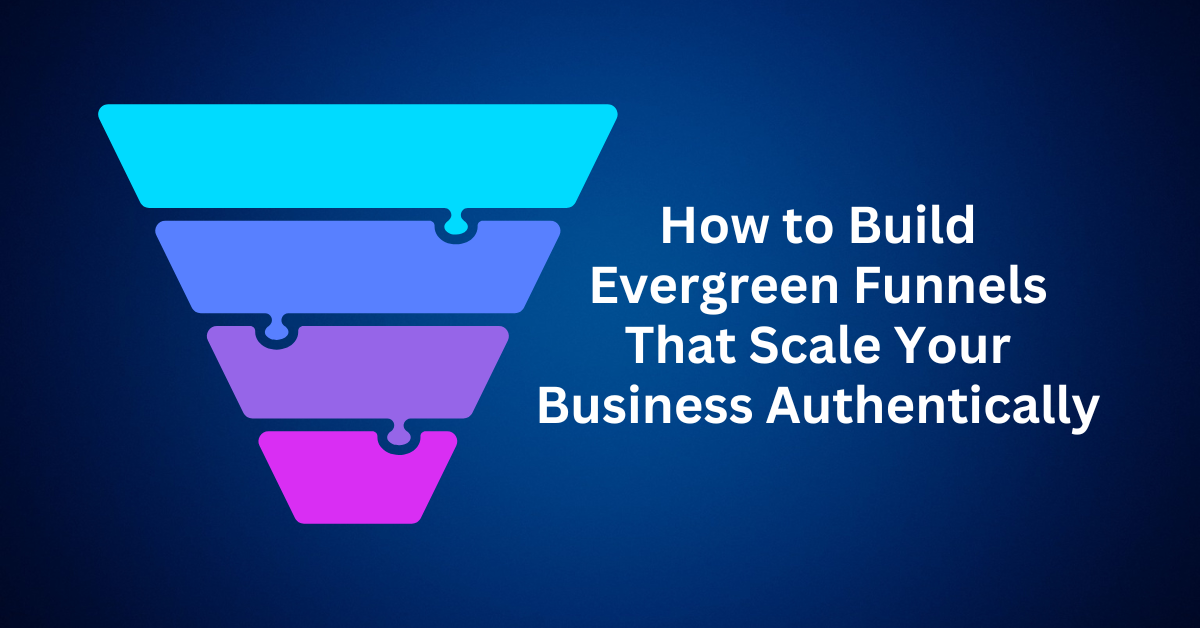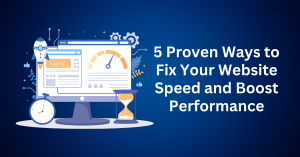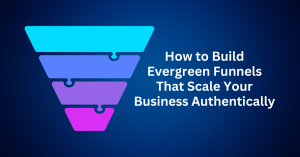Planning an event is no small task. From brainstorming the theme and securing top speakers to promoting it across multiple channels, every detail matters. However, even with a great lineup and strong marketing, a slow or confusing sign-up process can instantly stall your momentum. And, this is exactly why you need an automated event registration landing page.
The truth is, your registration page is often the very first real interaction people have with your event. If it feels clunky, outdated, or requires too many steps, potential attendees might decide it’s just not worth the effort, and that’s where you risk losing valuable leads.
Fortunately, this is exactly where automated event registration landing pages make all the difference. They act as your behind-the-scenes powerhouse, streamlining the entire sign-up process, minimizing manual errors, and ensuring every guest enjoys a seamless experience from start to finish.
In this post, we’ll explore why automating your event registration is a game-changer, how it benefits both organizers and attendees, and how you can easily set one up to save time, reduce stress, and boost sign-ups.

Table of Contents
ToggleWhy Automation Is the Key to Effortless Event Registration
The saying “you never get a second chance to make a first impression” couldn’t be truer when it comes to events. Your registration page sets the tone for what attendees can expect. If it’s disorganized, they’ll assume your event will be too.
Here’s why switching to an automated event registration system is one of the smartest moves you can make.
1. Save Time and Eliminate Human Error
How many hours have you wasted manually entering attendee details or fixing typos in name badges? Manual processes don’t just eat up time. In fact, they also open the door to costly mistakes.
With an automated event registration landing page, all attendee data is collected accurately and stored securely. No more duplicate entries, lost forms, or back-and-forth emails. You can instantly export attendee lists, print badges, and manage check-ins, freeing you up to focus on delivering a memorable event experience instead of data cleanup.
2. Scale Effortlessly. Whether It’s 50 or 5,000 Attendees
Your registration system should grow with your event, not hold it back. Whether you’re hosting an intimate workshop or a massive industry conference, automation ensures consistency.
Instead of juggling spreadsheets or worrying about hitting capacity limits, your automated event landing page can handle unlimited registrations, process payments, and send confirmation emails instantly. That means you can scale your event marketing without adding extra administrative work.
3. Deliver a Seamless, Friction-Free Experience for Attendees
Your attendees are busy. The easier it is for them to sign up, the more likely they’ll complete the process.
Automated registration pages remove unnecessary friction, no forms to print, no waiting for manual approvals, no confusing multi-step confirmations. With just a few clicks, attendees can register, receive confirmation, and even add the event to their calendar automatically.
This smooth process not only improves satisfaction but also reduces drop-off rates, meaning more of your visitors actually become attendees.
4. Gain Real-Time Insights to Improve Decision-Making
Wondering how your event promotion is performing? An automated registration platform provides real-time analytics so you can see exactly who’s signing up, where they’re coming from, and what’s driving the most conversions.
You’ll have instant access to important metrics like:
- Daily or weekly registration trends
- Geographic data on attendees
- Conversion rates from specific marketing channels
With this data, you can make quick, informed decisions like when to boost ads, adjust pricing tiers, or open more seats.
How an Automated Event Registration Landing Page Works
An automated registration landing page is the backbone of a smooth, modern event experience. It’s more than just a sign-up form. It’s a fully integrated system that collects attendee details, processes registrations, sends confirmations, and keeps your event data perfectly organized behind the scenes.
Instead of juggling spreadsheets, manually replying to inquiries, or chasing down payments, automation does it all for you, accurately and instantly. Let’s break down how this process typically works step by step.
1. Build and Customize Your Registration Form
Every great event begins with an easy-to-use registration form. This is where you gather essential attendee details such as their name, email address, company, and ticket preference.
With an automated registration page, you have full control over what to include, from meal preferences and session selections to special access codes. The form is built right into your website or landing page and connected directly to your database, ensuring all information is captured accurately in real time.
Pro tip: Keep your form short and simple. The fewer steps it takes to register, the higher your completion rate will be.
2. Automatically Send Confirmation and Reminder Emails
Once someone registers, they shouldn’t have to wait for manual approval or confirmation. An automated registration system immediately sends a personalized confirmation email that reassures attendees that their spot is secured.
As the event date approaches, your system automatically triggers reminder emails with key information such as the event schedule, venue details, or virtual access link. These reminders can also include helpful add-ons like calendar invites or travel recommendations, reducing no-shows and keeping your attendees engaged from day one.
3. Integrate Secure Payment Processing (If Needed)
For paid events, automation saves you from the headache of manually handling transactions. By connecting your landing page to secure payment processors like PayPal, Stripe, or Square, attendees can register and pay in a single seamless step.
Funds are processed instantly, receipts are issued automatically, and payment records are stored in your dashboard for easy reconciliation. This not only saves time but also minimizes human error and enhances security, a win-win for both organizers and attendees.
4. Sync with Your Event Management Tools
One of the biggest advantages of using an automated event registration system is how easily it integrates with your event management software.
Once someone registers, their details are automatically synced with tools that handle logistics such as attendee lists, ticketing, badge printing, or even seat assignments. You can track registrations in real time, monitor ticket sales, and manage event capacity all from a single dashboard.
This seamless integration eliminates double work and keeps your team fully aligned on the latest updates, no spreadsheets or manual imports needed.
5. Automate Follow-Ups and Post-Event Engagement
The automation doesn’t stop when the registration closes. A smart system continues to nurture your relationship with attendees before, during, and after the event.
You can schedule automated follow-up emails to share additional resources, send last-minute updates, or even promote future events. After the event, the same system can automatically deliver thank-you notes, feedback surveys, or special offers to encourage repeat participation.
This consistent communication keeps your audience engaged and builds long-term loyalty, turning one-time attendees into lifelong fans.
Key Benefits of Using Automated Event Registration Landing Pages for Events
If you’re still managing event sign-ups manually, you’re leaving time, money, and potential attendees on the table. In today’s fast-paced digital world, people expect instant confirmation, seamless payment options, and personalized communication, and an automated event registration landing page delivers exactly that.
Let’s dive into the biggest advantages of automating your event registration process and how it can dramatically improve your results.
1. Boost Efficiency and Save Hours Every Week
Manual registration can be one of the most time-consuming parts of event planning. From typing attendee details into spreadsheets to verifying payments and chasing incomplete forms, these repetitive tasks can quickly eat up your schedule.
Fortunately, with an automated event registration system, those tedious tasks are handled instantly and accurately. As a result, data flows directly into your event management dashboard, confirmations are sent automatically, and every record is neatly organized.
Ultimately, this means you can focus on the high-impact parts of event planning — such as curating great content, coordinating vendors, and enhancing the attendee experience — instead of losing hours to administrative work.
2. Increase Conversion Rates with a Friction-Free Experience
Imagine this: someone clicks on your event ad, gets excited to attend, and then… abandons the registration halfway through because the process feels long or confusing. It happens more often than you think.
Simplifying your sign-up process through automation makes a world of difference. With a few quick clicks, your attendees can register, pay (if needed), and receive instant confirmation, no waiting, no confusion.
The smoother your registration experience, the higher your completion rates. When people can register in under a minute, they’re far more likely to follow through, and your event attendance numbers will reflect that.
3. Personalize Communication for Better Engagement
Automation isn’t just about efficiency; it’s about connection. The information your attendees share during registration can help you create a more personalized experience from the start.
For example, if someone signs up for your marketing workshop, they can automatically receive pre-event resources, speaker highlights, or industry-related updates. A healthcare professional, on the other hand, might get content tailored to their field.
This level of customization builds trust and relevance. Your attendees feel valued and understood, which increases engagement before, during, and even after your event.
4. Cut Costs and Maximize Your Event Budget
Every manual task, data entry, email confirmation, or payment tracking translates into lost productivity. Over time, those hours add up to real costs.
By automating your registration workflow, you eliminate repetitive work and reduce the need for extra administrative support. You’ll not only save time but also optimize your event budget for what really matters: improving content quality, marketing reach, and attendee experience.
Simply put, automation helps you do more with less, making your event management process both leaner and more profitable.
How to Choose the Right Software for Your Automated Event Registration Landing Page
Not all event registration tools are created equal. While countless platforms let you build sign-up pages, from website builders to specialized event software, choosing the right one can make or break your registration success.
The ideal automated registration landing page software should do more than just collect names and emails. It should streamline every part of your workflow from sign-up to payment to follow-up, all within one integrated platform.

Here’s what to look for when selecting the best software to automate your event registration process.
1. User-Friendly, Drag-and-Drop Page Builder
You shouldn’t need a degree in web design to create an attractive, high-converting event registration page. The best software solutions come with a drag-and-drop editor that allows you to easily move elements, change layouts, and customize your design.
Look for platforms that let you add event details, images, testimonials, and payment buttons in minutes, no coding required. This kind of intuitive builder saves time and ensures your page looks professional, even if you’re not a tech expert.
Pro tip: A clean layout and clear call-to-action (“Register Now” or “Save Your Spot”) will dramatically improve your conversion rates.
2. Built-In Automated Email System
A great event registration tool doesn’t just capture leads — it also keeps them engaged. For that reason, your platform should include a built-in email automation system that handles everything from confirmation messages to reminder sequences.
Once someone registers, the system should:
- Immediately send a personalized confirmation email.
- Then, automatically deliver reminders as the event date approaches.
- Finally, follow up after the event with thank-you notes or surveys.
In this way, automation ensures no one slips through the cracks, and as a result, you never have to send updates again manually.
3. Seamless, Secure Payment Integration
If your event requires payment, the registration experience should be as smooth as possible. Sending attendees to a separate site to complete payment increases drop-off rates and confuses.
Instead, choose a platform that offers direct payment integration with trusted providers like PayPal, Stripe, or Square. This lets attendees register and pay all in one step, securely and conveniently.
Bonus: Look for platforms that automatically generate receipts and track payments in your dashboard, so you can easily reconcile your sales later.
4. Real-Time Registration Data and Insights
Knowing what’s happening with your event in real time can be a true game-changer. For this reason, your software should include live registration tracking, so that you can see how many people have signed up, which channels they came from, and most importantly, where potential registrants are dropping off.
With this insight in hand, you can make quick, data-driven decisions — for example, adjusting your marketing campaigns or sending targeted reminders to those who haven’t completed their registrations.
Moreover, the most advanced systems integrate seamlessly with analytics tools, thereby giving you a complete overview of your event’s performance from start to finish.
5. Scalable and Reliable for Growth
Whether you’re hosting a small workshop or a large international conference, your registration platform should scale effortlessly. A good event registration system can handle 50 or 5,000 attendees with equal ease, without crashing, lagging, or losing data.
As your events grow, your platform should grow with you, offering features like custom ticket tiers, multi-session scheduling, and integration with CRMs or marketing funnels. Reliability and scalability ensure your system stays stable no matter how big your audience gets.
Final Thoughts: Streamline Your Automated Event Registration with Funnel Software
Your event registration process should excite people, not frustrate them. The smoother it feels, the more likely attendees are to complete their sign-up and actually show up.
By using funnel-building software for your event registration, you can create a page that’s both beautiful and functional. Instead of wrestling with forms, spreadsheets, and endless follow-up emails, you get an automated system that handles everything seamlessly in the background.
From the moment someone clicks “Register,” your automated registration funnel can:
- Capture attendee information instantly
- Send confirmation and reminder emails automatically
- Process payments securely on the same page
- Track real-time registration data so you can make quick decisions
The result? A faster, smoother, and more professional experience for both you and your attendees.
Stop losing sign-ups to outdated, complicated registration forms. Instead, make registering as effortless as attending. With the right funnel software, you’ll turn your event registration into a frictionless process that impresses your audience, before your event even begins.
If you’re ready to elevate your event experience, start by testing a funnel builder that includes drag-and-drop design, built-in automation, and analytics tracking. You’ll see the difference from your very first registration campaign.







